Hyundai IONIQ 6 vs Mercedes CLA Shooting Brake – Which car suits you better?
Compare performance, boot capacity, efficiency and price at a glance.
Find out which car is the better choice for you – Hyundai IONIQ 6 or Mercedes CLA Shooting Brake?
Costs and Efficiency:
Price and efficiency are often the first things buyers look at. Here it becomes clear which model has the long-term edge – whether at the pump, the plug, or in purchase price.
Hyundai IONIQ 6 has a hardly perceptible advantage in terms of price – it starts at 37600 £, while the Mercedes CLA Shooting Brake costs 37700 £. That’s a price difference of around 106 £.
As for range, the Hyundai IONIQ 6 performs significantly better – achieving up to 614 km, about 530 km more than the Mercedes CLA Shooting Brake.
Engine and Performance:
Under the bonnet, it becomes clear which model is tuned for sportiness and which one takes the lead when you hit the accelerator.
When it comes to engine power, the Hyundai IONIQ 6 has a noticeable edge – offering 650 HP compared to 421 HP. That’s roughly 229 HP more horsepower.
In acceleration from 0 to 100 km/h, the Hyundai IONIQ 6 is distinct quicker – completing the sprint in 3.20 s, while the Mercedes CLA Shooting Brake takes 4.10 s. That’s about 0.90 s faster.
In terms of top speed, the Mercedes CLA Shooting Brake performs minimal better – reaching 270 km/h, while the Hyundai IONIQ 6 tops out at 257 km/h. The difference is around 13 km/h.
There’s also a difference in torque: Hyundai IONIQ 6 pulls distinct stronger with 770 Nm compared to 500 Nm. That’s about 270 Nm difference.
Space and Everyday Use:
Cabin size, boot volume and payload all play a role in everyday practicality. Here, comfort and flexibility make the difference.
Both vehicles offer seating for 5 people.
In curb weight, Mercedes CLA Shooting Brake is noticeable lighter – 1530 kg compared to 1850 kg. The difference is around 320 kg.
In terms of boot space, the Mercedes CLA Shooting Brake offers clearly perceptible more room – 505 L compared to 401 L. That’s a difference of about 104 L.
When it comes to payload, Mercedes CLA Shooting Brake a bit takes the win – 520 kg compared to 430 kg. That’s a difference of about 90 kg.
Who wins the race?
The Hyundai IONIQ 6 proves to be dominates this comparison and therefore becomes our DriveDuel Champion!
Hyundai IONIQ 6 is the better all-rounder in this comparison.
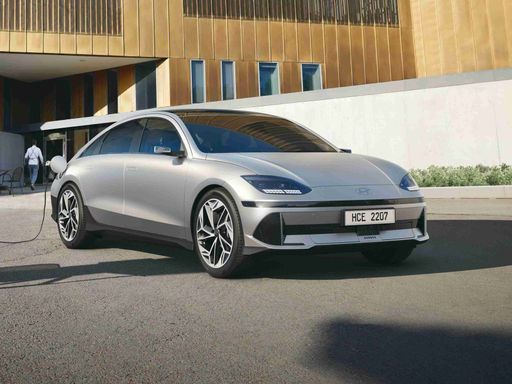
Hyundai IONIQ 6
Hyundai IONIQ 6
The Hyundai IONIQ 6 merges futuristic design with eco-friendly technology, offering a glimpse into the future of electric mobility. Its sleek silhouette and aerodynamic profile are sure to capture attention on the road, while the interior provides a seamless blend of comfort and cutting-edge digital features. With a focus on efficiency and sustainability, this model represents a significant step forward in the evolution of electric vehicles.
details @ hyundai.news
@ hyundai.news
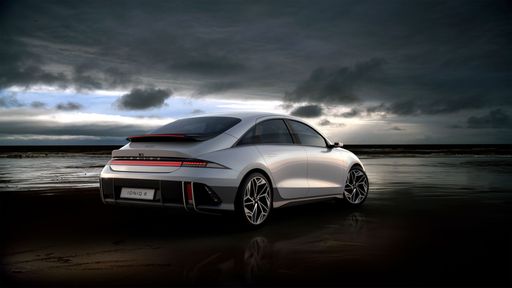 @ hyundai.news
@ hyundai.news
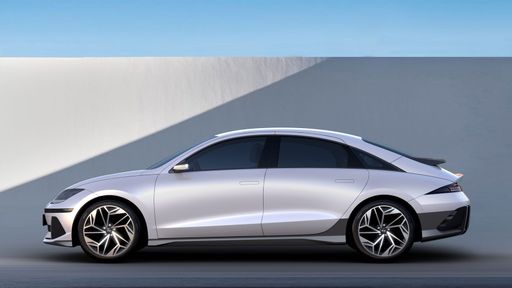 @ hyundai.news
@ hyundai.news
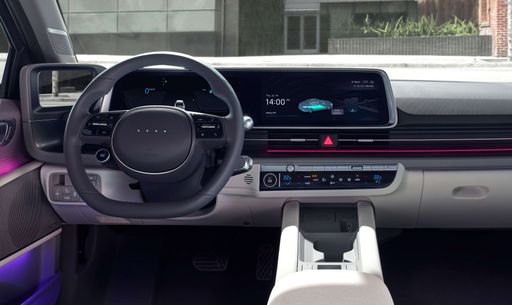 @ hyundai.news
@ hyundai.news
Mercedes CLA Shooting Brake
The Mercedes-Benz CLA Shooting Brake artfully combines the sleek aesthetics of a coupé with the practicality of an estate. Its interior boasts luxurious materials and cutting-edge technology, providing a sophisticated driving experience. With a focus on style and functionality, this model is designed to appeal to both the modern family and the discerning individual.
details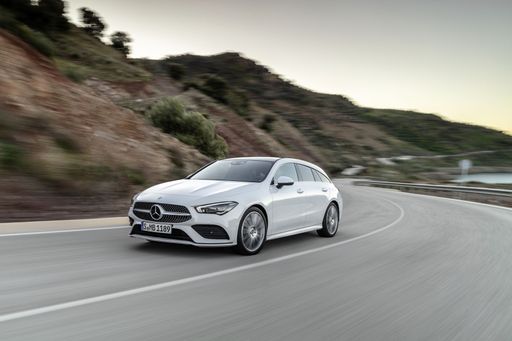 @ group-media.mercedes-benz.com
@ group-media.mercedes-benz.com
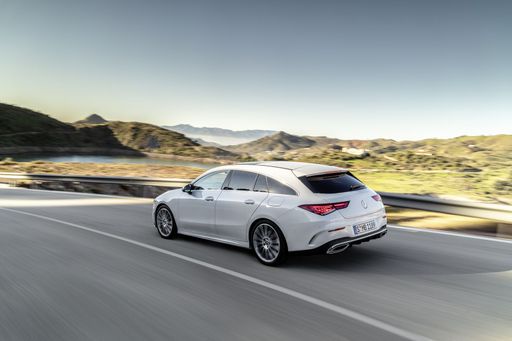 @ group-media.mercedes-benz.com
@ group-media.mercedes-benz.com
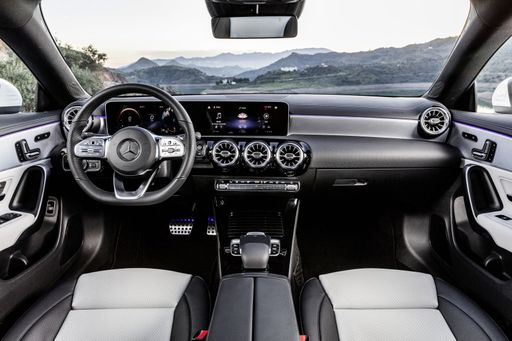 @ group-media.mercedes-benz.com
@ group-media.mercedes-benz.com
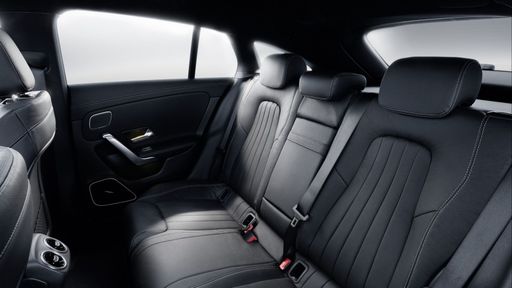 @ group-media.mercedes-benz.com
@ group-media.mercedes-benz.com
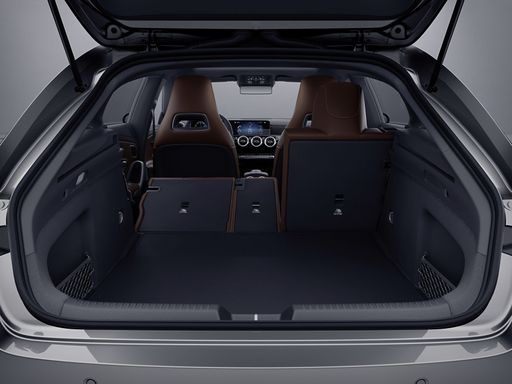 @ group-media.mercedes-benz.com
@ group-media.mercedes-benz.com

|

|
|
|
|
Costs and Consumption |
|
|---|---|
|
Price
37600 - 64300 £
|
Price
37700 - 74700 £
|
|
Consumption L/100km
-
|
Consumption L/100km
2.4 - 9.1 L
|
|
Consumption kWh/100km
13.9 - 15.1 kWh
|
Consumption kWh/100km
-
|
|
Electric Range
429 - 614 km
|
Electric Range
84 km
|
|
Battery Capacity
53 - 84 kWh
|
Battery Capacity
12.90 kWh
|
|
co2
0 g/km
|
co2
55 - 206 g/km
|
|
Fuel tank capacity
-
|
Fuel tank capacity
35 - 51 L
|
Dimensions and Body |
|
|---|---|
|
Body Type
Hatchback
|
Body Type
Estate
|
|
Seats
5
|
Seats
5
|
|
Doors
4
|
Doors
5
|
|
Curb weight
1850 - 2095 kg
|
Curb weight
1530 - 1775 kg
|
|
Trunk capacity
401 L
|
Trunk capacity
445 - 505 L
|
|
Length
4855 - 4935 mm
|
Length
4692 - 4695 mm
|
|
Width
1880 - 1940 mm
|
Width
1834 - 1857 mm
|
|
Height
1495 mm
|
Height
1405 - 1433 mm
|
|
Max trunk capacity
-
|
Max trunk capacity
1310 - 1370 L
|
|
Payload
425 - 430 kg
|
Payload
460 - 520 kg
|
Engine and Performance |
|
|---|---|
|
Engine Type
Electric
|
Engine Type
Plugin Hybrid, Petrol MHEV, Diesel, Petrol
|
|
Transmission
Automatic
|
Transmission
Automatic
|
|
Transmission Detail
Reduction Gearbox
|
Transmission Detail
Dual-Clutch Automatic
|
|
Drive Type
Rear-Wheel Drive, All-Wheel Drive
|
Drive Type
Front-Wheel Drive, All-Wheel Drive
|
|
Power HP
151 - 650 HP
|
Power HP
116 - 421 HP
|
|
Acceleration 0-100km/h
3.2 - 8.8 s
|
Acceleration 0-100km/h
4.1 - 10.1 s
|
|
Max Speed
185 - 257 km/h
|
Max Speed
203 - 270 km/h
|
|
Torque
350 - 770 Nm
|
Torque
230 - 500 Nm
|
|
Number of Cylinders
-
|
Number of Cylinders
4
|
|
Power kW
111 - 478 kW
|
Power kW
85 - 310 kW
|
|
Engine capacity
-
|
Engine capacity
1332 - 1991 cm3
|
General |
|
|---|---|
|
Model Year
2022 - 2025
|
Model Year
2024 - 2025
|
|
CO2 Efficiency Class
A
|
CO2 Efficiency Class
B, D, E, G
|
|
Brand
Hyundai
|
Brand
Mercedes-Benz
|
What drive types are available for the Hyundai IONIQ 6?
Available configurations include Rear-Wheel Drive or All-Wheel Drive.
The prices and data displayed are estimates based on German list prices and may vary by country. This information is not legally binding.
